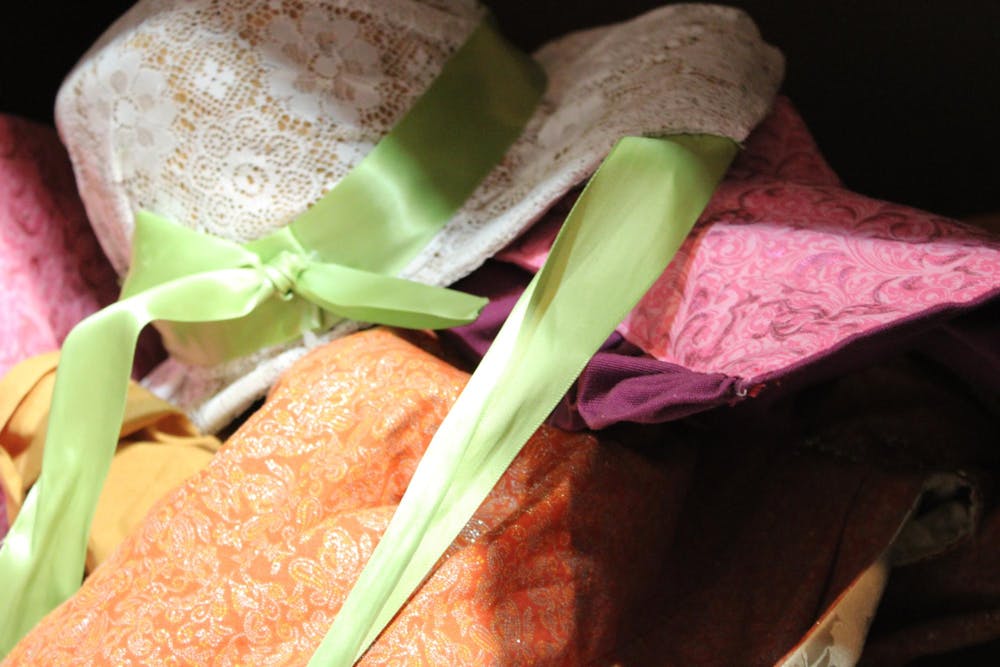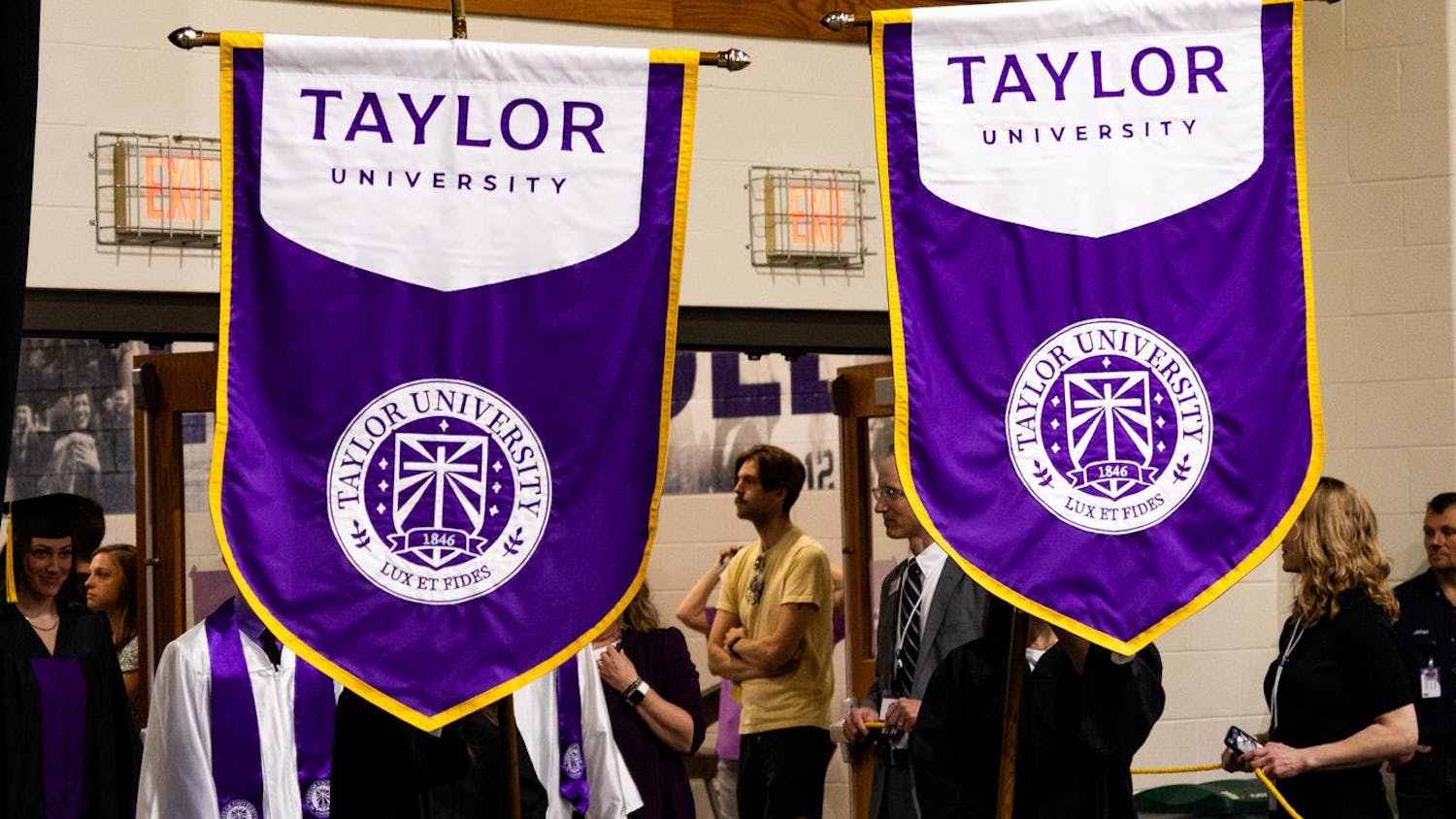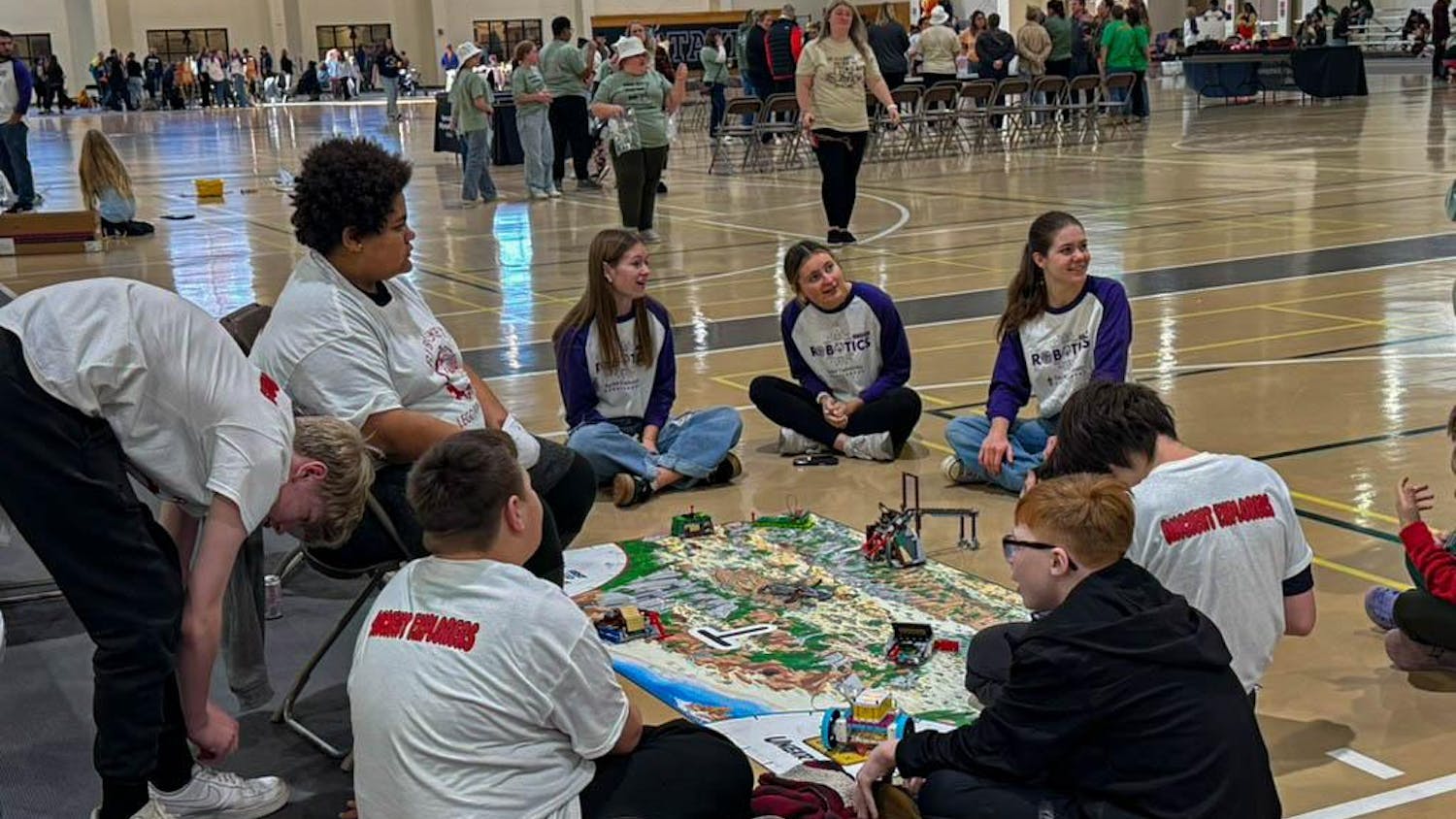An empty canvas, a widened lens, a dark set: this is the hallowed ground of visual arts.
Yet what is it that truly captures the eye, separating high-society Paris from the streets of 1880s New York, a dusty barn from dry cornfields? What is it that makes a world feel truly alive?
In the realm of theater, the answer may come unexpectedly from above, in the vast depths of the Taylor Theatre prop loft.
“There's so much more (in the loft) than you think there is up there,” Mimi Schaffer, Taylor Theatre’s hair and makeup designer, said. “But it all gets used all the time.”
Though not working directly with props, Schaffer noted the degree of overlap between traditional props and the wigs and palettes she works with for each production. Just as the stage’s setting plays a role in a given show, props, costumes, makeup and backdrops can in many ways contribute as much to the viewer’s experience of a play as the actors themselves.
It’s why the properties master does not work in isolation from other production workers.
“If somebody's putting on makeup onstage (in a scene), I work with the props master to find … a time-accurate tube of lipstick,” Schaffer said. “Sometimes we'll have to figure out what color is in there, and I'll just match whatever color that the person has on their face.”
On the theatrical side of props, items will be reviewed by both the director and the designer before a production to ensure even the smallest details don’t get overlooked.
For film and media arts students, the issue of true-to-life props can be even more complicated. Working with real-life environments, unintentional objects such as exit signs must be removed or avoided. Meanwhile, ‘hero’ props, such as Snow White’s poisoned apple or Chekov’s smoking gun, both of which provide relevance to a specific plot, must be more grounded, suiting the limitations of students’ access to setting, scope and even funding.
“I already tend to scale back, because I am kind of conscious about (how), if this is actually getting produced, how are we gonna do that? ” Kiersten Williams, a senior film and media arts student said. “But film is meant to be like a replication of real life, in a way. Even when you're getting into the more absurdist things, then it's like a warped and twisted reality.”
Williams said it’s important not to immediately shut down a given idea because the prop hunt would be difficult—a statement testified to by her search for a live horse for a recent music video she filmed, and the fabric she stitched to alter on-hand dresses.
Yet Williams also admitted that this challenge is what often fuels her creativity.
As film students craft and fill their shooting locations and theater hands build or thrift any unobtained objects, there’s an element of originality that each production grows to possess.
“Yesterday, I was practicing dropping a (prop of a) dead body,” Chelsea Hickman, Taylor Theatre’s current properties master, said. “I've learned to sew, and sometimes I'm building things, sometimes I'm painting things….I love being able to try something new.”
The sheer number of elements used in a production attests to the level of detail-orientation professional prop masters must display. From a mattress’s bed sheet to the glass of water a character carries, the responsibility of behind-the-scenes work is often unnoticed by audience members.
Yet the impact can be described simply as magic.
“Sometimes when you're doing the work, it's like, ‘Oh, so much work,’” Hickman said. “‘Is it worth it?’ And then, you just see it come together, and then people are enjoying it, and that’s a really good compliment. You feel it.”
It’s the moment a stage transforms from a blank floor to another world—when an old barn suddenly becomes the heartbeat underlying a greater story. It is here that the visual arts become just that: a work of art.




